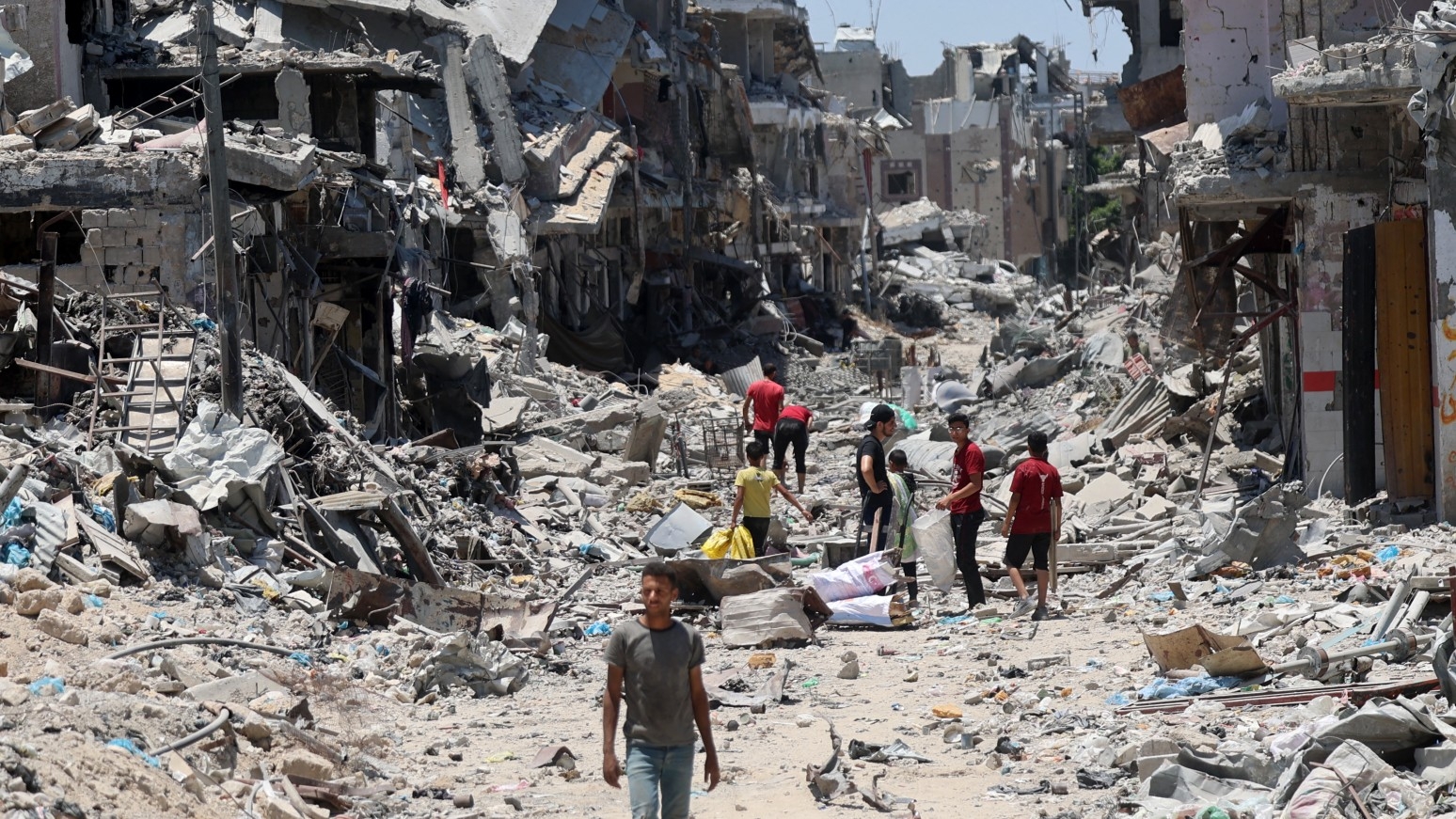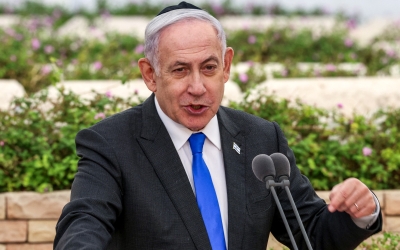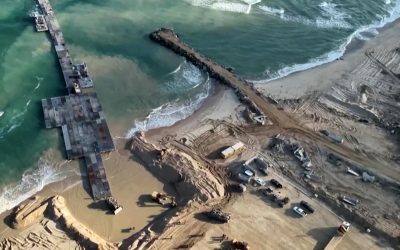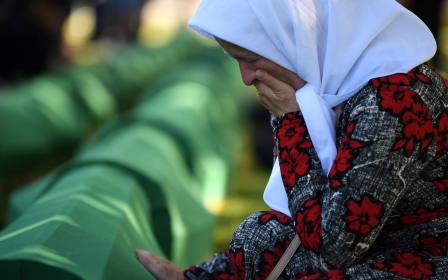War on Gaza: Hamas dismisses reports that breakthrough is imminent in ceasefire talks

Hamas has dismissed media reports that claim a breakthrough is imminent in negotiations with Israel over a ceasefire in Gaza, with sources telling Middle East Eye that several obstacles remained and that Israeli Prime Minister Benjamin Netanyahu was obstructing the process as mediators again push for a deal.
Sources in the Palestinian movement rubbished reports on Thursday that claimed a framework for the ceasefire had been agreed upon by the parties and that they were now negotiating details of how it would be implemented.
The sources, who spoke on condition of anonymity, said that there was "nothing new" to report and there was no impending "breakthrough" in negotiations, despite CIA director Bill Burns meeting senior Israeli, Egyptian and Qatari officials in Doha on Wednesday.
Burns travelled to Qatar earlier this week in the hope of closing remaining gaps in the framework of the ceasefire deal and moving to detailed negotiations.
On Wednesday, the Washington Post reported, citing an unnamed US official, that the framework for the ceasefire had been "agreed" upon and that the parties were "negotiating details of how it will be implemented".
New MEE newsletter: Jerusalem Dispatch
Sign up to get the latest insights and analysis on Israel-Palestine, alongside Turkey Unpacked and other MEE newsletters
However, the sources from Hamas told MEE that "contrary to what David Ignatius [the Washington Post columnist] wrote, [there is] no progress in negotiations".
"Parts of what was mentioned in David Ignatius's article were discussed and we did not reach an agreement on, some weren’t discussed at all, and others mentioned in the piece are not even up for negotiations or discussions with the Israelis," one of the sources said.
Israel and Hamas have been engaged in indirect talks since January to reach a deal that ends the war on Gaza and swaps prisoners.
Three-phased proposed outline
The two sides have been back and forth over a three-phased proposed outline for the agreement presented by mediators from the United States, Qatar and Egypt.
The mediators have not publicly detailed the full contents of the proposal, but the broad contours of the deal, according to previous rounds of negotiations shared with MEE, involve a six-week pause in fighting, in which Hamas will release some Israeli captives it has held since 7 October when it attacked southern Israel.
In exchange, Israel is expected to release a number of Palestinian prisoners, withdraw its troops from certain regions of the Gaza Strip and allow Palestinians to travel from the south of the territory to the north.
During the second phase, there would be a direct announcement of a permanent cessation of military operations before the remaining Israeli captives are exchanged for more Palestinian prisoners.
In the last phase, there would be a complete lifting of the blockade of the Gaza Strip.
According to the Washington Post's report, Hamas reportedly relented on its demand for a written guarantee on a permanent end to the fighting. Instead, it reportedly accepted a UN Security Council resolution passed last month which said: "If the negotiations take longer than six weeks for phase one, the ceasefire will still continue as long as negotiations continue."
The Post also claimed that Hamas and Israel agreed to hand over control of Gaza to a new US-trained Palestinian force of 2,500 supporters of the Palestinian Authority (PA).
According to the report, members of the force would be drawn from those already in Gaza and have been vetted by Israel. The force would also be backed by moderate Arab states.
In May, a senior Palestinian source with knowledge of Hamas policies, told MEE that Hamas was prepared to show "flexibility" about the future governance of Gaza, as long as the decision to rule the war-battered enclave is agreed upon by other Palestinian factions and is not imposed by either the US or Israel.
At the time, however, there was no mention that they would agree to a force that was made up of PA supporters.
There was no confirmation of this new US-backed force from the sources from Hamas MEE spoke to, or from Israeli officials.
'No safety in the south or north'
According to a separate report on Wednesday, Axios reported, citing unnamed Israeli and US officials, that Israel believed the framework for the ceasefire deal should be resolved during this latest round of talks in Doha.
However, it reported that several sticking points remained, such as the timetable for Israeli forces withdrawing from Gaza, the identities and sequence of the Palestinian prisoners who will be released from Israeli prisons, and whether Israel will be able to veto the release of some prisoners.
The US is Israel's closest ally and biggest arms supplier but, along with several nations, has become sharply critical of the huge death toll in Gaza and the destruction wrought by the nine-month Israeli offensive.
Any deal that pauses fighting in Gaza would provide a foreign policy victory for President Joe Biden as he gears up for a difficult election contest with Donald Trump after a dismal debate performance that raised concerns about his age and cognitive abilities.
Despite attempts to end the conflict, which has displaced 90 percent of Palestinians more than once, Israeli forces have continued to attack Gaza and on Wednesday issued new forced displacement orders for Palestinians in the north of the enclave, demanding that they move south.
The new orders, detailed in leaflets dropped by the Israeli military, called on Palestinians to flee along two so-called "safe corridors" from Gaza City to Deir al-Balah in central Gaza.
The orders, seen by Palestinians as an attempt to ethnically cleanse northern Gaza, come amid intensifying Israeli aerial and ground attacks in the war-ravaged area.
Several Palestinians in Gaza City shrugged off the latest displacement orders, saying they would would rather die in their destroyed homes than flee.
"We will remain steadfast in our homes. We will stay in them," Fatima Shaheen, in her 70s, told MEE in her bombed-out home. "We die here or we triumph."
Mohammad Kassab, who was forced from his home in the Tuffah neighbourhood earlier this week by Israel's recent ground offensive, echoed Shaheen's resolve.
'We will remain steadfast in our homes. We will stay in them. We die here or we triumph'
- Fatima Shaheen, resident of Gaza
Opting to move further north to the Jabalia refugee camp instead of fleeing south, he told MEE that the survival of his family played heavily on his mind but safety remained elusive throughout Gaza.
"There's no safety in the south or north. I would rather die in Tuffah or Jabalia than be buried in the south," he said, adding that "life's necessities are non-existent there [in the south]".
Having lost his wife and mother to an Israeli air strike earlier in the war, Kassab now cares for his three sons and daughter alone.
"We struggle to get water and only have canned food available. But we say all praise is due to God."
Israel's war on Gaza, now nearing its tenth month, has destroyed large swaths of the besieged territory.
More than 38,000 people have been killed, the great majority of them women and children. Thousands more are missing or presumed to be dead under the rubble.
Communicable diseases are rapidly spreading, and infant mortality has skyrocketed.
Middle East Eye delivers independent and unrivalled coverage and analysis of the Middle East, North Africa and beyond. To learn more about republishing this content and the associated fees, please fill out this form. More about MEE can be found here.






